Conference at the University of Zagazig (Egypt)
March 13-15, 2016
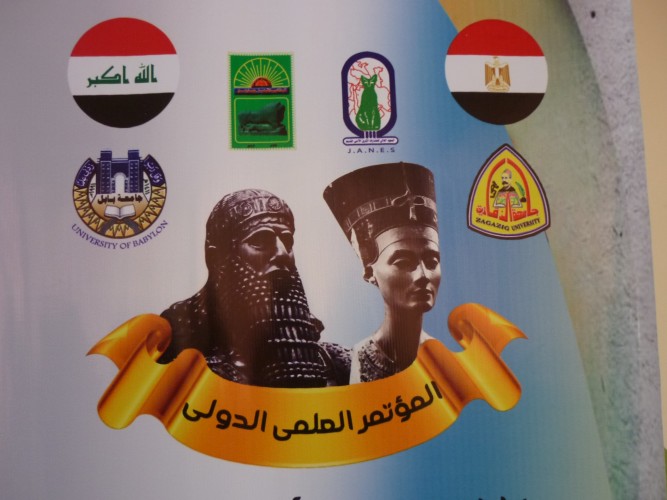
Conference logo in Zagazig (Hammurabi and Nephretete)
On March 13-15, 2016, representatives of the Foundation for Supporting Research on the disclosure of ancient and contemporary knowledge of nations took part in an international scientific conference entitled: Ancient Civilizations of the Middle East and their influence over the centuries , organized by the Institute of Ancient Near Eastern Civilization of the University of Zagazig in Egypt. About 150 delegates of various institutions and universities from Egypt, Jordan, Iraq, Arab Emirates, Saudi Arabia, Algeria, Tunisia, Libya and Poland took part in the conference.
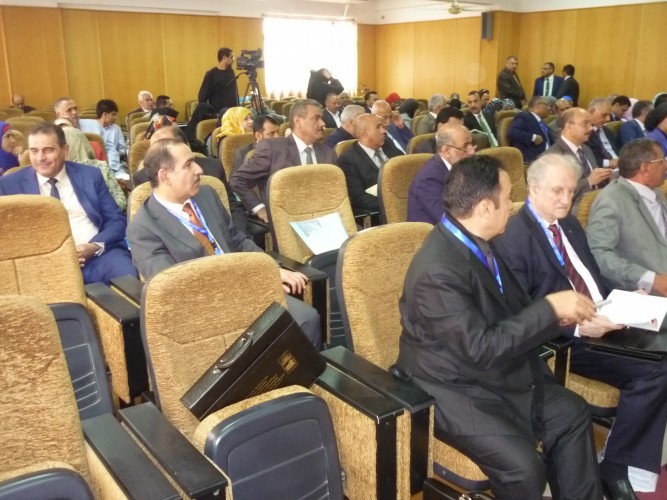
Conference room - the first day of the conference
This conference has been announced for a long time (since 2010), however, the unstable political situation in the Middle East caused the date of the meeting to constantly move. The reason for the invitation of representatives from Poland was the fact that in the years 2008 - 2009 the Polish Foundation financially supported research in the necropolis in Hawara, conducted on the basis of an agreement between the University of Cirs and the University of Wrocław. Unfortunately, for unknown reasons for the examination in Hawar, they were detained by the decision of the Secretary General of the Supreme Council of Antiquities in April 2009.
on behalf of the Wisdom of Nations . Dr. Szynkiewicz presented a presentation entitled: Hawara - past ... the present ... the future . The purpose of the president of the President of the Foundation Andrzej Wójcikiewicz was to conduct talks with the authorities of the University of Zagazig on the scope of cooperation between the Foundation and the Institute of Middle East Civilization of the University of Zagazig. This was all the more desirable because the dean of the Institute, prof. Mahmoud Omar Selim intends to undertake and pilot work in the necropolis in Hawara, through its institute and university, and in cooperation with our foundation.
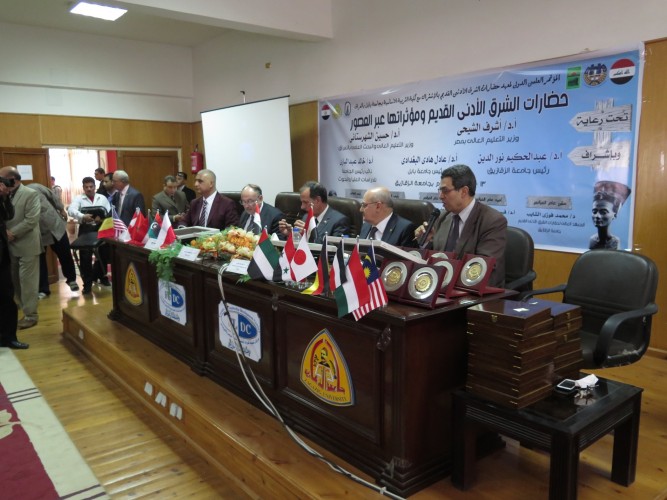
Opening of the conference - the first from the right prof. Dr Mahmoud Omar Selim, dean of the Institute and conference organizer
Guests from Poland met with great interest of local media (we were the only Europeans participating in the conference) and representatives of universities from these countries. The presentation of Dr. Szynkiewicz about Hawara gathered a very large group of listeners. The abstract was printed in English and Arabic, and the article will be published entirely in post -conference materials.
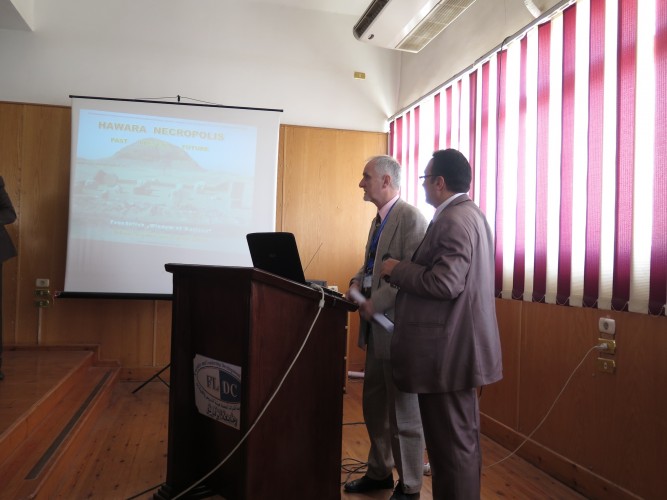
Presentation of Dr. Adam Szynkiewicz (with a translation into Arabic by Dr. Reda)
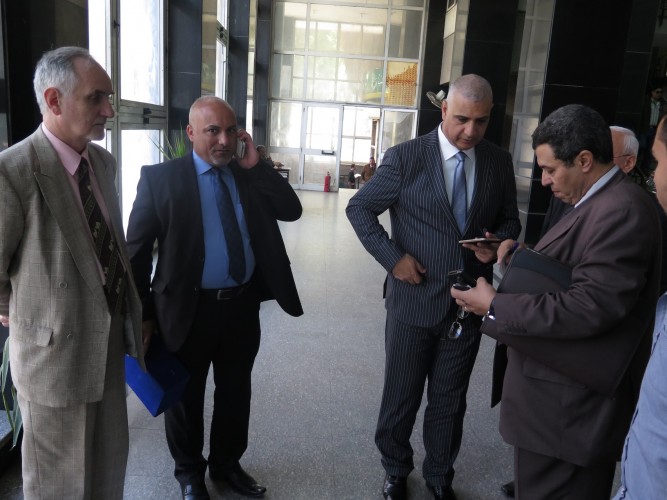
In the minister of higher education in Cairo - from the left: dr Adam Szynkiewicz, prof. Quais Hatim Hari (Babylon University, Iraq), prof. Mohammed Shaker al Rubaie (Babylon University, Iraq), prof. Mahmoud Omar (University of Zagazig, Egypt)
Dr Adam Szynkiewicz, then an employee of the Institute of Geological Sciences of the University of Wrocław, in 2008 supervised geological work (drilling, control excavations) and georadar research (GPR), which were carried out near the mule pyramid in Hawar. As you know - the necropolis area is considered by Egyptologists as a place where there was once a great maze described by Herodotus about 450 years BC because the results of the research showed very interesting anomalies, suggesting the existence of underground, unknown structures - the presentation of these results at the scientific conference in Egypt was the most desirable.
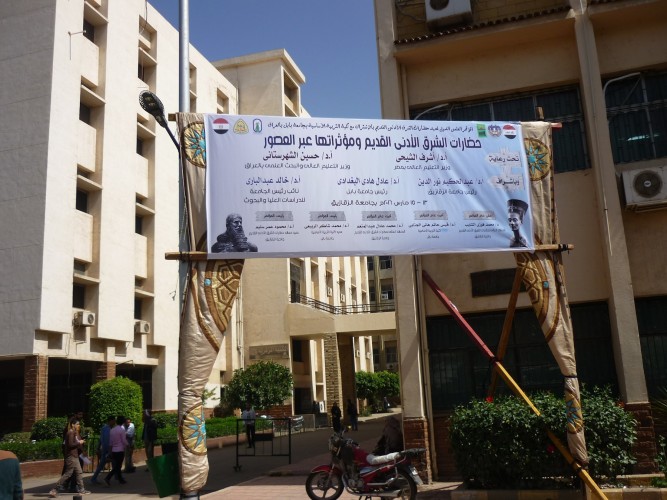
The building of the University of Zagazig, in which the conference took place
Another member of the Council of the Wisdom of Nations , who took part in the conference in Zagazig, was Dr. Reda Abdul Haleem from Egypt. Dr. Reda, who in the time of research in Hawara was the head of the research area (on-sit manager) is currently an employee of the Ministry of Antiquities in Cairo and acts as the director of the area of three pyramids in Giza. Dr. Red presented an extremely interesting paper on the possibility of the second Sphinx in three pyramids in Giza. Confirmation of this thesis would be a fairly sensational discovery. A separate article on this subject will be placed on our website at a later date.
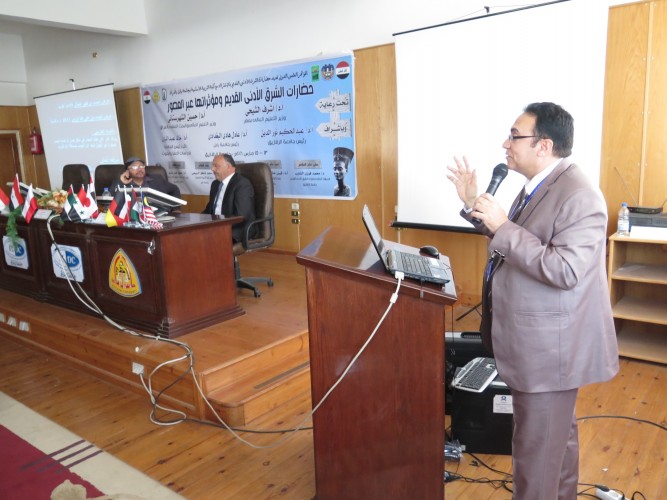
Dr. Red during the presentation on the "Second Sphinx" in Giza
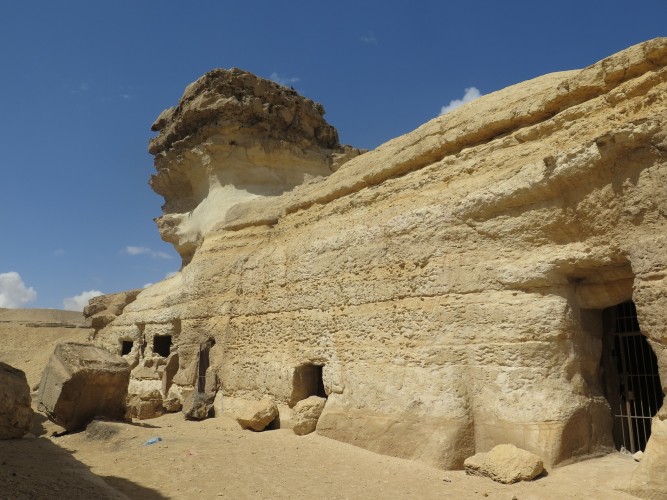
The area of three pyramids in Giza - "Second Sphinx"
Here is a summary of the presentation of Dr. Adam Szynkiewicz (abstract):
The necropolis in Hawara: past - present - the future
Past:
Modern archaeological research in the necropolis in Hawara was initiated at the end of the 19th century by the English archaeologist Flinders Petrie. These studies were completed in 1911. It was only 100 years later that the researchers again became interested in the region of the Mulle Pyramid in Hawara and in February 2008 a group led by prof. Abbas Mohamed Abbas from the National Instutute of Astronomy and Geophysics from Cairo, in cooperation with the University of Ghent (Belgium), performed a number of comprehensive geophysical research in the south and west of the pyramid.
Subsequent research was carried out in the period: from March 2008 to April 2009 by the Egyptian-Polish archaeological mission in Fayoum, on the basis of an agreement between the Faculty of Archeology of the University of Cirs (Egypt) and the University of Wrocław (Poland). The research manager was the dean of the University of Cairo prof. Dr. Alaa Shaheen. During this period, research was carried out in the immediate vicinity of the Mulle Pyramid in Hawara. They were entirely financed by the University of Wrocław. As part of these studies, the Egyptian site provided archaeological supervision, and the Polish side performing geological and hydrogeological geological studies.
In the first place, geological data analyzes from the Mulle Pyramid in Hawara, obtained from Egyptian geologists, were performed. At the request of the Polish side, two complementary control drilling were made. These data were used to prepare geological cross -sections by the pyramid and its surroundings. Secondly, a preliminary Georadar (GPR), in the immediate vicinity of the pyramid, was performed. In the third, three geological control research shurphs were performed (on the east and north of the pyramid).
In order for a detailed georadar (GPR) tests to be performed around the mulch pyramid in Hawar, a request to the Supreme Council of Antiquities in Egypt was asked for permission to clean up large sand heaps and leveling the area of the area in the surroundings of the pyramid. After obtaining consent, the Faculty of Archeology of the University of Circuits conducted supervision over this work. As part of cleaning work on the south -eastern side of the Pyramid from the sands of the sands, numerous artifacts were recovered. After the inventory of them by archaeologists, some of the large artifacts were secured in the form of a small outdoor museum at the pyramid, and the most important and most interesting are stored in the Museum in Cairo. For unknown reasons, the work on the pyramid in Hawar was suspended in April 2009.
Present:
Currently, the Mułów pyramid in Hawara presents a very bad state. Its surface is seriously damaged and the mud bricks from which it is built begins to slide down. Around the pyramid there are great heaps of sand, which is difficult to go through. The southern entrance to the interior of the pyramid is partially buried and threatens to collapse. The rooms under the pyramid are flooded with water.
Tourist traffic, which was increasingly severe during Egyptian-Polish work in the Hawara region, now fell to almost zero.
Future:
Local authorities would like to renovate the pyramid and make it available for tourist traffic, however, this requires additional study work, research and technical projects. The Polish Foundation for Supporting Research on revealing the knowledge of ancient and contemporary knowledge of nations would like to financially support the activities of Egyptian local authorities, to which the region of the Mulle Pyramid in Hawara and proposes to perform the following actions:
1. Cleaning sand from heaps and equalizing the surface on the north and southern side of the Pyramid in Hawara;
2. Performing detailed georadar (GPR) tests in the 3D system surrounded by the pyramid (for such tests it is necessary to clean the pyramid environment - see section 1.);
3. Execution of geological control drilling in designated places;
4. Preparation of the project of limiting the water supply to the pyramid;
5. Performance of georadar tomography (GPR) of the mule pyramid in Hawara;
6. Renovation of the southern entrance to the interior of the Mulle Pyramid in Hawara;
7. Construction of the museum at the Mulle Pyramid in Hawar;
8
The Foundation is ready to financially support both local authorities and academic institutions cooperating in these projects (with close cooperation with the Ministry of Antiquities) in the implementation of the above -mentioned activities. This may occur after signing the contracts and obtaining appropriate permits from the Ministry of Antiquity.

